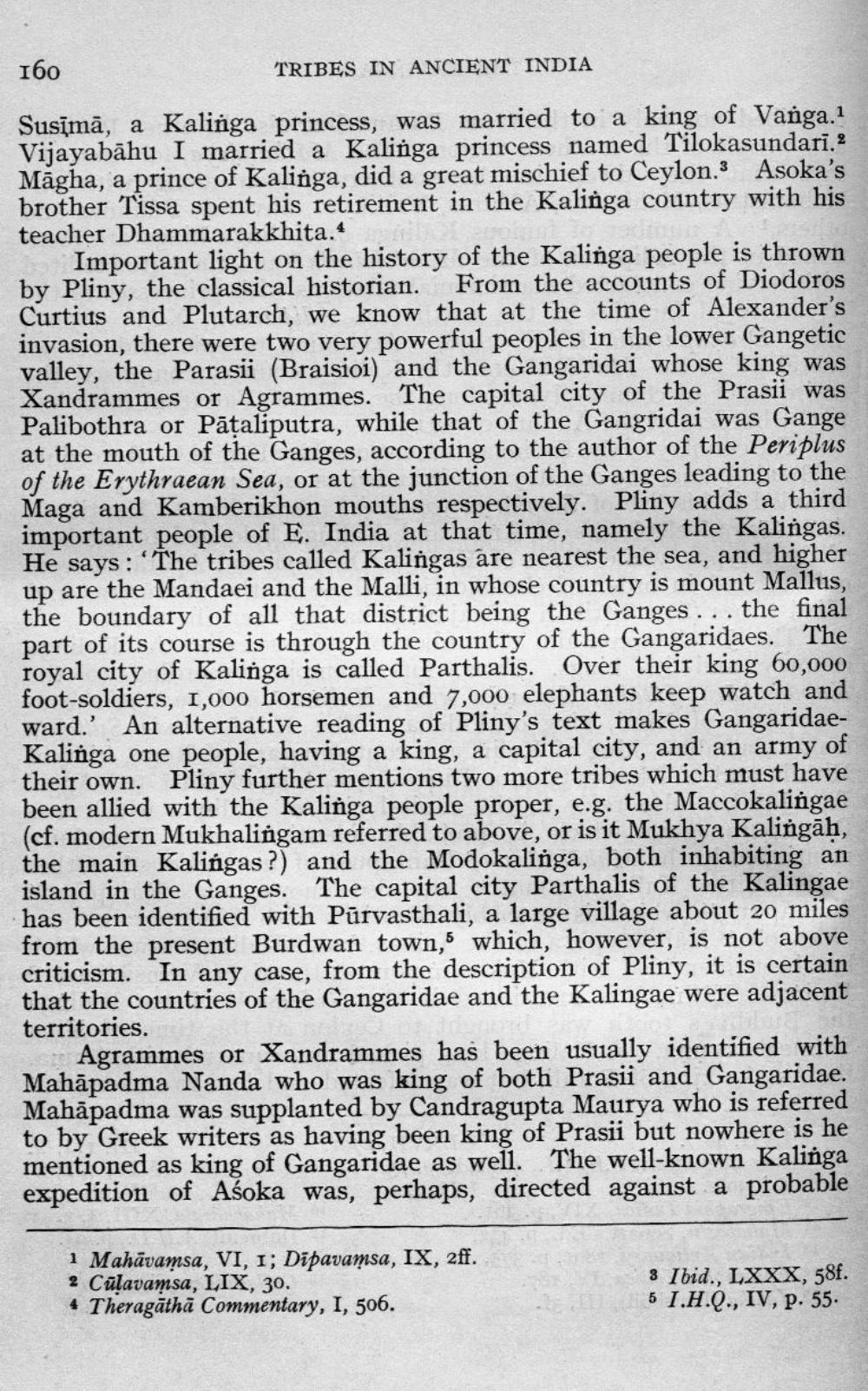________________
160
TRIBES IN ANCIENT INDIA
Susīmā, a Kalinga princess, was married to a king of Vanga.1 Vijayabāhu I married a Kalinga princess named Tilokasundari. Māgha, a prince of Kalinga, did a great mischief to Ceylon.3 Asoka's brother Tissa spent his retirement in the Kalinga country with his teacher Dhammarakkhita.
Important light on the history of the Kalinga people is thrown by Pliny, the classical historian. From the accounts of Diodoros Curtius and Plutarch, we know that at the time of Alexander's invasion, there were two very powerful peoples in the lower Gangetic valley, the Parasii (Braisioi) and the Gangaridai whose king was Xandrammes or Agrammes. The capital city of the Prasii was Palibothra or Pāțaliputra, while that of the Gangridai was Gange at the mouth of the Ganges, according to the author of the Periplus of the Erythraean Sea, or at the junction of the Ganges leading to the Maga and Kamberikhon mouths respectively. Pliny adds a third important people of E. India at that time, namely the Kalingas. He says: 'The tribes called Kalingas are nearest the sea, and higher up are the Mandaei and the Malli, in whose country is mount Mallus, the boundary of all that district being the Ganges ... the final part of its course is through the country of the Gangaridaes. The royal city of Kalinga is called Parthalis. Over their king 60,000 foot-soldiers, 1,000 horsemen and 7,000 elephants keep watch and ward. An alternative reading of Pliny's text makes GangaridaeKalinga one people, having a king, a capital city, and an army of their own. Pliny further mentions two more tribes which must have been allied with the Kalinga people proper, e.g. the Maccokalingae (cf. modern Mukhalingam referred to above, or is it Mukhya Kalingāh, the main Kalingas?) and the Modokalinga, both inhabiting an island in the Ganges. The capital city Parthalis of the Kalingae has been identified with Pūrvasthali, a large village about 20 miles from the present Burdwan town, which, however, is not above criticism. In any case, from the description of Pliny, it is certain that the countries of the Gangaridae and the Kalingae were adjacent territories.
Agrammes or Xandrammes has been usually identified with Mahāpadma Nanda who was king of both Prasii and Gangaridae. Mahāpadma was supplanted by Candragupta Maurya who is referred to by Greek writers as having been king of Prasii but nowhere is he mentioned as king of Gangaridae as well. The well-known Kalinga expedition of Asoka was, perhaps, directed against a probable
1 Mahāvamsa, VI, I; Dipavamsa, IX, 2ff. 2 Culavamsa, LIX, 30. 4 Theragātha Commentary, I, 506.
3 Ibid., LXXX, 58f. 5 1.H.Q., IV, p. 55.




